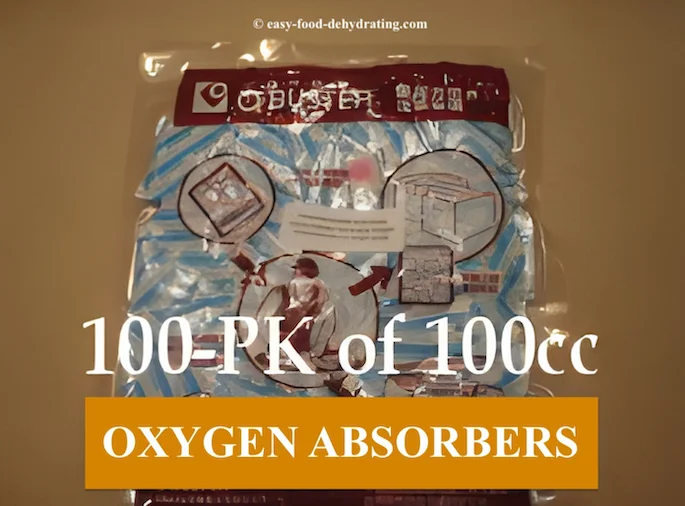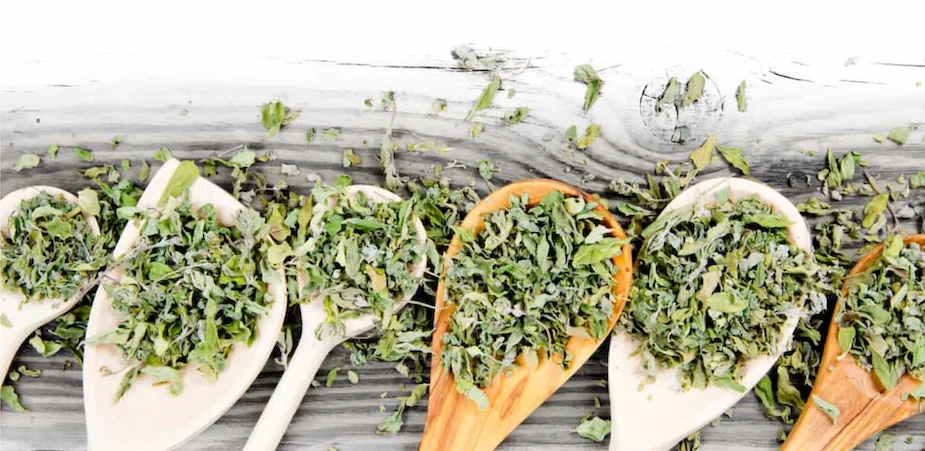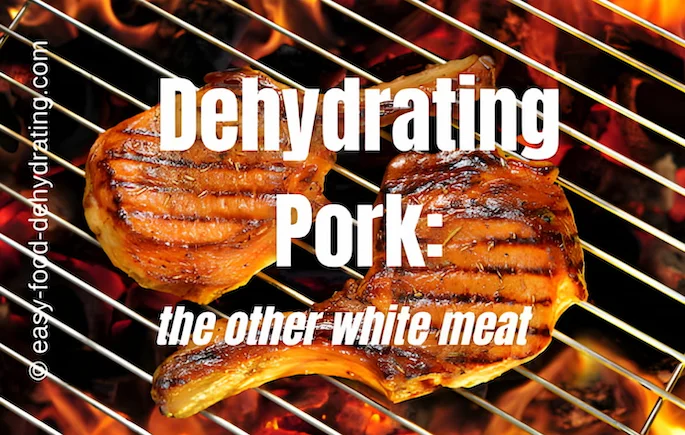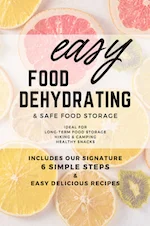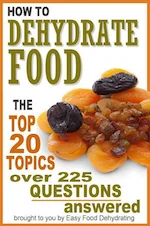- Home
- Easy Food Dehydrating Podcast - Hub Page
- Podcast Episode 6: Dehydrating Food in Convection Ovens
Podcast Episode 6:
Dehydrating Food in Convection Ovens
SEASON 2

by: Susan Gast | Author, Blogger at Easy Food Dehydrating, Beesville Books, and SupaBees music!
Dehydrating Food in Convection Ovens
 Podcast Created With Google's AI NotebookLM
Podcast Created With Google's AI NotebookLMThanks for checking out this Podcast Dehydrating Food in Convection Ovens
Listen to This...
Head on over to our Podcast Host to see a list of all our Easy Food Dehydrating episodes... or go to our hub page on this site. Please note that for your convenience, the episodes on our site contain the Podcast transcripts, too!
Read the Full Transcript, Below:
00:04
Hello, and welcome to Easy Food Dehydrating, the show that
teaches you how to safely dehydrate and store fresh or frozen fruits and
vegetables along with cooked meats. Let's get going!
00:21
Okay. So have you ever thought about dehydrating food at home? Yeah. Like for prepping or, you know, for healthy snacks? Mhmm. It can be a little bit intimidating to think about.
For sure.
So we're taking a deep dive today. We're looking at Easy Food Dehydrating, which is a website run by Susan Gast, and she's been doing this since 2010. Oh, wow. It's not like just some, you know, flash in the pan blog. This is somebody who knows what they're doing.
Yeah. She's got the experience.
Exactly.
00:50
Yeah. So she tackles one of the biggest questions right off the bat.
Okay.
Convection oven versus a dedicated dehydrator.
Right. Because... Which one's better?
Can my oven really do this, or am I gonna end up with a big, mushy mess?
Exactly.
So let's talk about the underdog first.
Okay.
01:06
Convection oven.
Alright.
So, surprisingly, you can actually dehydrate food in a convection oven.
You can. It's all about the air circulation.
Well, explain that.
So with the convection oven, you have a fan that circulates the hot air, and that helps to remove the moisture from the food.
It's like a little wind tunnel in there.
Exactly. It's constantly carrying away those water molecules.
So what... what are some of Susan's tips for making this work?
Well, first of all, you wanna use the lowest temperature setting possible.
Okay.
01:33
Ideally, between a 135°F and a 170°F [for an oven].
Use our Fahrenheit to Celsius converter here on our site!
Wow. So low and slow.
Low and slow. That's the key. We're not trying to bake here. Gotcha.
You're just trying to dry it out.
Cool.
And this is where it gets interesting.
01:46
You actually wanna prop the door open a crack.
What?
Yeah. You can use a wooden spoon or some crumpled up aluminum foil just to let that humid air escape.
I never would have thought of that.
It sounds crazy, but it really works.
But it makes sense.
Yeah. You're basically turning your oven into a giant dehydrator.
It's a hack.
It is a hack.
But it works.
It does work, but there are some limitations.
Okay. Like what?
Well, as your food shrinks, it can fall through the racks in your oven.
Ah, so, like, if you're drying herbs or something. [free Herbs eBook here].
Exactly. They might end up on the heating element.
Oh, no.
Not good.
Yeah. Not good.
02:21
And plus, you're limited by the number of racks that you have in your oven. Yeah. And let's be real, running a full sized oven for hours... Yeah. Not very energy efficient.
No. That's gonna run up the electric bill.
It will.
So maybe not the best option.
Maybe not. Okay. So it sounds like a dedicated dehydrator might be the way to go.
It might be if you're serious about dehydrating.
Okay. So tell me what makes them so special.
02:44
Well, they are designed specifically for dehydrating food.
Okay.
They offer really precise temperature control.
Okay.
They have much better airflow than a convection oven.
So they're more efficient?
They are.
And they have stackable trays so you can dry more food at once.
Exactly. Much more space.
I like that.
03:01
And Susan, actually, she owns both an Excalibur and a Nesco dehydrator.
Oh, wow.
And she says that even the basic models work really well, and they're surprisingly affordable.
Oh, that's great.
And when you consider the long term energy savings. Yeah.
A dehydrator starts to look like a really smart investment.
I could see that.
Especially compared to running your oven for hours. So you've got your convection oven, which is sort of like the... The DIY?
Yeah. The DIY option.
The hack.
The hack. Yeah. And then you've got your dedicated dehydrator, which is, like, the purpose built.
The pro.
The pro. Exactly. Okay. So we've got the two contenders.
But I think before we get too far into, like, actually using them, we need to talk about...The process.
03:44
The process of dehydrating itself.
Right.
Because Susan has some tips that I think are really interesting.
Absolutely. She's got years of experience, and she's got some great advice for getting the best results regardless of which method you choose.
03:55
Yeah. And I'm really curious to hear about this conditioning step.
Oh, yeah. That's an important one.
But we'll talk about that later.
We will.
Yeah.
Yeah. So you were asking about some of Susan's tips for dehydrating.
Yeah. Like, what about this pre-treating thing?
Oh, right. Yeah. She talks about how to pre-treat certain fruits to prevent browning.
Okay. Wait. But before we get into that... Yeah. Like, if oven drying is so inefficient, why even bother?
That's a good point. I mean, Susan does say that you can use an oven in a pinch.
Yep.
Especially if you're just starting out or if you're only doing small batches. Right. It's all about having options.
Yeah. Like, if you don't have a dehydrator. Exactly. You can still experiment and see if you like it. Right. Okay. So back to the tips.
04:37
Okay. So pre-treating fruits.
Yeah.
You know how when you cut an apple, it starts to brown almost immediately? Yeah. That's oxidation.
Oh, right.
So to prevent that, Susan recommends dipping the fruit in lemon juice [or spraying].
Ah, so it's like a little antioxidant bath.
Exactly. It helps to preserve the color and the flavor.
So your dried fruit looks all pretty?
Exactly.
Okay. What about this conditioning step?
04:59
Oh, yeah. Conditioning is super important.
Okay. So tell me about it.
So after you've dehydrated your food, you don't wanna just pack it away immediately. You need to condition it first.
What does that mean?
So, basically, you're letting the dried food sit out at room temperature for a few days [in a Ziploc bag].
Okay.
And this allows any remaining moisture to distribute evenly.
So you don't end up with, like, moldy spots.
Exactly. It helps to ensure that your food is shelf-stable and that it will last a long time.
So? So it's like a quality control step.
It, it's like a spa day for your dried food. I like that. It's all about pampering those dehydrated goodies.
05:36
So we've talked about the equipment and the process. Mhmm. But let's step back for a minute. Okay. Why are we even doing this?
Yeah. What's the big deal about dehydrating food?
Besides, like, the cool factor of making your own snacks... Right.
What are the real benefits?
Well, for a lot of people, it's about preparedness... Okay.
You know, having a supply of shelf-stable food on hand in case of an emergency.
Yeah. Like those prepper people.
Exactly. They're all about being prepared.
But it's not just for preppers.
No. No. No.
It's for anyone who wants to eat healthier.
Right.
Like, you can control the ingredients.
Exactly. You can avoid all those added sugars and preservatives that are in store bought snacks.
And you can save money.
06:18
Sponsor Message
You're going to love this. Getting Susan's book, Easy Food Dehydrating is one of the smartest things you can do for your health and your budget. Not only will you save money, but you'll know exactly what goes into your recipes. Susan's book takes you from start to finish with all the recipes on her site, including her best selling “Make Your Own Dog Food” recipes for Chicken Chow and Bow Wow Beefy Chow. Learn how to dehydrate the top 14 fruits and the top 16 vegetables, along with cooked meats such as chicken, beef, and turkey. Visit Easy Food Dehydrating and get started today.
07:04
Absolutely. Dried food is much cheaper than buying prepackaged snacks.
And you can reduce food waste.
Oh, yeah. That's a big one.
Like, if you have fruits and vegetables that are about to go bad.
You can dehydrate them and save them.
Exactly.
Susan talks about how she loves to hit the farmers markets when produce is in season and it's cheap.
Oh, yeah.
And then she dehydrates it and enjoys it all year round.
That's smart.
It is it's a great way to eat healthy and save money.
07:30
And it's not just fruits and veggies.
No. You can dehydrate all sorts of things.
Like what?
You can dehydrate yogurt to make healthy snacks.
Really?
07:30
Yeah. And you can make your own powdered soup mixes. Wow. And you can even make homemade pet treats. [cat treats here - dog food here]
Oh, my dog would love that.
I know. My dog loves dehydrated treats.
So the possibilities are endless.
They really are.
07:49
Okay. So let's say someone is ready to start dehydrating.
Okay.
How do they choose between an oven and a dehydrator?
Well, it depends on how serious they are about it.
K.
If you're just a casual dehydrator, you know, maybe you wanna dry some herbs or make some fruit leather.
Yeah.
An oven might be fine. But if you're planning on dehydrating a lot of food.. Mhmm.
Or if you're prepping for camping trips or something. Right.
Then a dedicated dehydrator is probably a better investment.
Okay. That makes sense.
They're just more efficient, and they give you more control over the process.
08:22
And Susan has a lot of information on her website about choosing the right dehydrator.
Yeah. She breaks down different models and features.
So people can find one that fits their needs and their budget.
Exactly. She's got you covered.
So let's talk about mistakes.
Okay.
08:36
What are some common mistakes that people make when they first start dehydrating?
One of the biggest mistakes is overcrowding the trays.
Oh, yeah. You see how that would be tempting?
It is. You wanna try to dry as much as possible at once.
Right.
But if you overcrowd the trays, the air can't circulate properly.
So the food doesn't dry evenly.
Exactly. And it can take a lot longer to dry.
And you might end up with mold.
Exactly.
So you're saying it's better to spread things out.
Exactly. Give each piece of food some breathing room. Room.
Okay. What else?
09:12
Another common mistake is not drying the food long enough.
Oh, yeah. I can see how that would be easy to do.
It is... it can be hard to tell when something is completely dry.
Especially if you're a beginner.
Exactly.
So how do you know when something is done?
Well, Susan has some guidelines on her website.
Okay.
But, basically, the food should feel leathery or brittle. Okay. Depending on what it is.
Okay.
And it shouldn't have any soft or squishy spots.
So, like, a dried apple slice should snap.
Exactly. It shouldn't bend. Gotcha. And it's always a good idea to let the food cool completely before you store it.
Okay. Why is that?
Because if you pack it away while it's still warm. Yeah.
9:51
Condensation can form inside the container.
And that can lead to mold.
Exactly.
So you're basically undoing all your hard work.
You are.
Okay. So we've talked about drying and cooling. Mhmm. What about storage?
K.
10:03
So for storage, you wanna use airtight containers. Okay.
And store the food in a cool, dark, and dry place.
K. Like a pantry.
Exactly. A pantry is perfect. And Susan mentions that some people use oxygen absorbers in their storage containers.
What are those?
They're little packets that absorb oxygen.
Okay.
And that helps to prevent the food from oxidizing and going rancid.
Oh, so it helps to keep the food fresh longer.
Exactly. It extends the shelf life.
10:31
Cool. Yeah. So how long does dehydrated food last?
Well, it depends on a lot of factors.
Like what?
The type of food. Right.
How it was dried. Right.
How it's stored.
Mhmm.
But generally speaking, dehydrated food can last for months or even years.
Wow. That's amazing.
It is. it's a great way to preserve food and save money.
So we've covered a lot of ground here.
We have.
10:51
We've talked about the equipment, the process, the benefits, the mistakes. Mhmm. And the storage.
It's been a comprehensive deep dive into the world of food dehydration.
Thanks to Susan Gast and her website, Easy Food Dehydrating.
Absolutely. She's a wealth of information.
I feel like we could talk about dehydrating all day.
Yeah. There's so much to learn.
I know Susan's website is amazing.
11:13
It is. She's got so much information on there.
I'm already thinking about what I wanna dehydrate first.
Me too.
Like, I'm kind of inspired now.
Yeah. It's really exciting.
It is. It's like a whole new world of food.
It is.
You know, this whole conversation's making me think about my grandma.
Oh, yeah.
She used to dehydrate apple rings.
Really?
Yeah. But she didn't have a fancy dehydrator.
What did she use?
She just used an old window screen.
Wow.
And she would set it out in the sun.
Like, old school?
Yeah. Totally old school.
That's so cool.
I know. And her apple rings were the best.
11:42
It's amazing what you can do with just a few simple tools.
Yeah. Like, you don't need a lot of fancy equipment. Nope. To dehydrate food.
It's a very accessible practice.
It is.
So now that you've learned all about dehydrating. Yeah.
What's the first thing you would dehydrate?
Oh, that's a good question.
What would you make?
12:02
I think I would start with some herbs.
Oh, yeah. That's a good one.
I love using fresh herbs.
Me too.
But they go bad so quickly.
I know.
It's so frustrating... So if I could just dehydrate them... Yeah.
And have them on-hand. Exactly. That'd be amazing.
It'd be like having a little herb garden in your pantry.
I love that idea.
It's a great way to add flavor to your cooking.
Okay.
12:24
So we've come to the end of our deep dive.
Yeah. We've explored a lot.
We've talked about convection ovens versus dehydrators.
We've learned about the benefits of dehydrating.
And we've gotten some great tips from Susan Gast. She's the expert. So, hopefully, you're feeling inspired to try dehydrating at home.
Yeah. Give it a shot.
It's a fun and rewarding way to preserve food.
And it's a great way to eat healthy.
So what are you waiting for?
Go forth and dehydrate.
And be sure to check out the show notes for links to Susan's website.
Yeah. She's got tons of great information on there.
And until next time, happy dehydrating.
Happy dehydrating.
13:00
Closing:
Thanks for listening to the Easy Food Dehydrating podcast.
Visit Easy-Food-Dehydrating.com for much more information on how to dehydrate food and the best way to safely store it.
Head on over to our Podcast Host to see a list of all our Easy Food Dehydrating episodes... or go to our hub page on this site. Please note that for your convenience, the episodes on our site contain the Podcast transcripts, too!
Thinking of Starting a Podcast?
Thinking of starting your own Podcast? I’m having a total blast… and Buzzsprout is here to help you get started. It’s so easy to launch a professional Podcast, and their support is second-to-none. Over 100,000 people already launched their Podcast with Buzzsprout.
They get your Podcast into every major Podcasting platform: such as Apple Podcasts, Spotify, Google Podcasts and many more. Get a great-looking Podcast website, along with an awesome Podcast player you can drop into other websites, detailed analytics, tools to promote your episodes, and much, much more!
Start today and get a $20 Buzzsprout credit when you upgrade to any plan via the link right HERE - this takes you to Buzzsprout's login-page where you can sign up for a free Buzzsprout account to get you going. This lets Buzzsprout know we sent you to them… and it helps support our show!
Buzzsprout - it's the easiest way to start a Podcast.
Before You Go...
If you like the content, please give me some love by clicking on the 🩷 in the lower right hand corner (on just about all my pages). This signals to me that you find it enjoyable and useful. Thank you so much!


